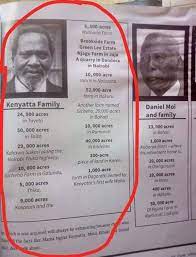POWER SHIFT IN BUKUSU LEADERSHIP
Before analyzing the rise of Sudi, it is important to mention his arch-rival and supposedly-community leader Wandabwa, son of Namunyulubunda. But to understand Wandabwa well, we have to time-travel back as far as 900 A.D (The Year of Our Lord).
As far as memories can grasp, Walumoli the son of Sioka (Omubuya) was the pioneer community leader. Walumoli together with his son Wabutubile takes the community from the plains of Silikwa to Ekukumayi through Sengeli, Namanajalala, and Namarare. His leadership is succeeded by Sioka a prominent Omulako. Later leadership drops among the Bakhurawra taken by Matukutuku who was a great ancestor of Mango, circumcision reformist. When Matukutuku dies at Esilangilile, power returns to the house of Omubuya as Sanjamolu leads the community up until Bukaya.
Batukwiika Bakitang’a then succeeds the community leadership as Maina (II) son of Nalukale, the famed leader arises to power. After decades in rein, he passes Ekutusi and lichabe (royal insignia) to Wakhulunya, his younger son. In a hereditary pattern, Wakhulunya hands over power to Namunyulubunda at around 1820.
Upon the coming of the British (the time of Namachanja), Wandabwa was looked upon as possible heir to Bukusu leadership. However, several reasons made that impossible. At this time, the coming of the British, the community was already isolated, and Namunyulubunda had failed to unite the people. Even as late at 1895 upon the great defeat of Bukusu at the Battles of Lumboka and later Chetambe (Kumunyalasia kwe Lumboka ne Chetambe), some clans had eluded up to as far as Tongaren. Then, Musamali, Wandabwa’s father had been deprived of his birth-right thus deemed an ineffective leader.
The third reason is that Ekobi – a boy with a single testicle who would be the grandfather of Namachanja (I) had encountered old and dying Namunyulubunda, the seer. Upon his death, Namunyulubunda left instruments of power to Ekobi now adopted in Ebukhone in Otunga’s Lukoba. For that reason power had shifted from Ebutukwiika to Ebukhone, putting Sudi in a better position than Wandabwa.
SUDI NAMACHANJA
Sudi was born around 1875 after Namachanja’s long search for heir-boy. Growing as a fine young man, with the wisdom of his father, Sudi succeeded Namachanja (I) as the leader of Bakhone and by extension Bukusu. He would later, in 1907 become appointed by the British imperialists as Paramount Chief of Bukusu. Sudi sustained a friendship with Nabongo Mumia, his brother in law, who was also a colonial bootlicker.
At one time, Sudi’s popularity fell upon the realization that he was colluding with Nabongo Mumia to hurt Bukusu. Sudi allegedly ran an underground robbery network greatly disadvantaging some clans of Bukusu. He would liaise with Bawanga rustlers to launch attacks on Bukusu kraals in the dead of night, making away with hundreds of cattle. As the leader of the cartel, he would also contract Barwa Bakwabi and Bakinisu mercenaries (Nandi and Uasin Gishu Masai) to make the night raids. Among the clans that fell victim were the Baengele, Bayundo, Balwonja, Batecho, Balunda and Bamuyonga.
From the underground business, Sudi stood to benefit in two ways. Firstly, he could take a portion of the loot as facilitating fee, and he grew immensely rich. Secondly, Sudi was appeasing the close friendship by Nabongo Mumia, who was his friend and political mentor. By now he had consulted his wisdom and realized the Babukusu were better collaborating with colonialists than putting up constant resistance. Despite military failures, Babukusu were a force to reckon and posed a stalemate to the Whiteman. Sudi thus sought the patronage of the Bawanga.
The community was growing gradually uncomfortable with Sudi wa Namachanja’s allegiance to Bawanga. Some felt that Wandabwa (Omutukwiika) would have been a better leader in Sudi’s place. Babukusu had witnessed great peace and receptacle leadership from Batukwiika climaxed by an exemplary leadership of Maina (II) wa Nalukale. With the public feeling falling out of favor of Sudi wa Namachanja, the community was again on a bloody path of resistance.
THE ANGLO-BUKUSU PEACE TREATY OF 1895
The Whiteman was increasingly pissed off with Babukusu non-collaborative stance. Attacks and intimidation were evident. Whiteman-endorsed bakasa (Elders) were no longer respected. Something was brewing. Nevertheless, the Whiteman through Mumia decided to organize a peace treaty with Babukusu elders to avoid further conflicts and bring peace. The ceremony was known as Khulia embwa [dog eating]. Just like it had happened between Bukusu and Bamia (Teso), a dog was to be dissected each party going with either part signifying peace. Due to the plea of Colonel Charles Hobley (Hobilo in the local dialect) on Mumia on the treaty, the later approached Sudi for advice. Col Hobley was the reigning Sub-commissioner of Kavirondo under the orders of the Queen of England.
Even to Mumia’s knowledge, Sudi could not adjudicate on Bukusu military matters. He could not wield such kind of power because only leaders from specific fighting/military clans could spearhead such matters. To the Bukusu elders, the ideal peace emissary was Wandabwa, son of Namunyulubunda, age-old seer and leader.
The two aims for the treaty was to arrange for the release of war prisoners and appoint a widely-accepted Bukusu leader who was to speak on behalf of Bukusu. Unknown to Wandabwa, Mumia advised Sudi to come with special gifts to the Whiteman.
And it came to pass. The elders sat, and Wandabwa presented gifts to Nabongo but none to the colonialists. A dog was cut, and the agreement was set. Then it was time to parade the Bukusu war prisoners in Whiteman’s camp. Wandabwa was asked to isolate ‘his people.' He could only recognize a few; probably friends and close relatives. Others wailed and cried, seeking freedom. Some were sick, wounded and disabled.
Then, the Whiteman then called Namachanja to identify his. He first presented gifts to Nabongo then to Colonel Hobley. The latter was impressed. When the time of choosing came, Sudi wa Namachanja stood to speak...
‘Sir, I am glad today you choose to release all my people. I assure you, sir, that I will find a home to each one of them. I swear I know all of them.’
The Whiteman was a bit perplexed by such an assertion but went ahead to release the people to Sudi's lukoba. And yet, it was not over. Later, the people flocked to Sudi so that they can have their war captive. He permitted such only if he were to be given one cow for every person released!
 |
| Late Seline Namusenge Sudi: Credits: Standard Digital |
People though strenuously were happy to rejoin with their families. They disowned Wandabwa as a possible community leader, and once more public opinion fell on Namachanja. As a result, Sudi grew rich and wielded more power. In 1907, he ascended to chieftainship a position he held until the late 1940s. Sudi wa Namachanja lived and ruled the community for 48 years. Sudi died in 1971 at the age of 95 allegedly leaving behind 117 wives with 173 children. The last of Chief Sudi’s wives Kukhu Selina Namusenge Sudi breathed her last Friday 13th May 2016 [Shown on the picture]. Among Sudi’s sons was the late Cardinal Maurice Otunga (31/1/1923 – 6/9/2003). In February 2014, His Excellency Ken Lusaka, Bungoma governor, laid the ground for Sudi’s mausoleum and cultural center at Tulumba in Bumula Sub-county.
Sudi can be said to be a practically wise and cunning leader who led the community as the first modern Bukusu Paramount chief. On the one hand, Sudi is remembered as having the rare gift of philanthropy and insights for leadership. On the flipside, he is perceived as a greedy schemer and political opportunist, who played a role in divisive leadership. He is, however, a remembered icon in Bukusu culture and recent community history.
A story is good, until another one is told...
Insights from
- · Bungoma County Facebook page: Posted 24th Feb 2014. Retrieved from https://www.facebook.com/Bungomawebsite/posts/646963618705200
- · F.E Makila (1976). An Outline History of Babukusu of Western Kenya. Nairobi: Oxford Press
- · George Were (1967). Western Kenya Historical Texts. Nairobi: East Africa Literature Bureau
- · Gunter Wagner. (1956). The Bantu of North Kavirondo Vol I&II. London: Oxford University Press
- · John Osogo: (1966)History of Baluyia. Nairobi: Oxford University
- · Titus Oteba. (2014). Last of chief’s 98 wives dies- Standard Digital. Retrieved from https://www.standardmedia.co.ke/article/2000201709/last-of-chief-s-98-wives-dies










